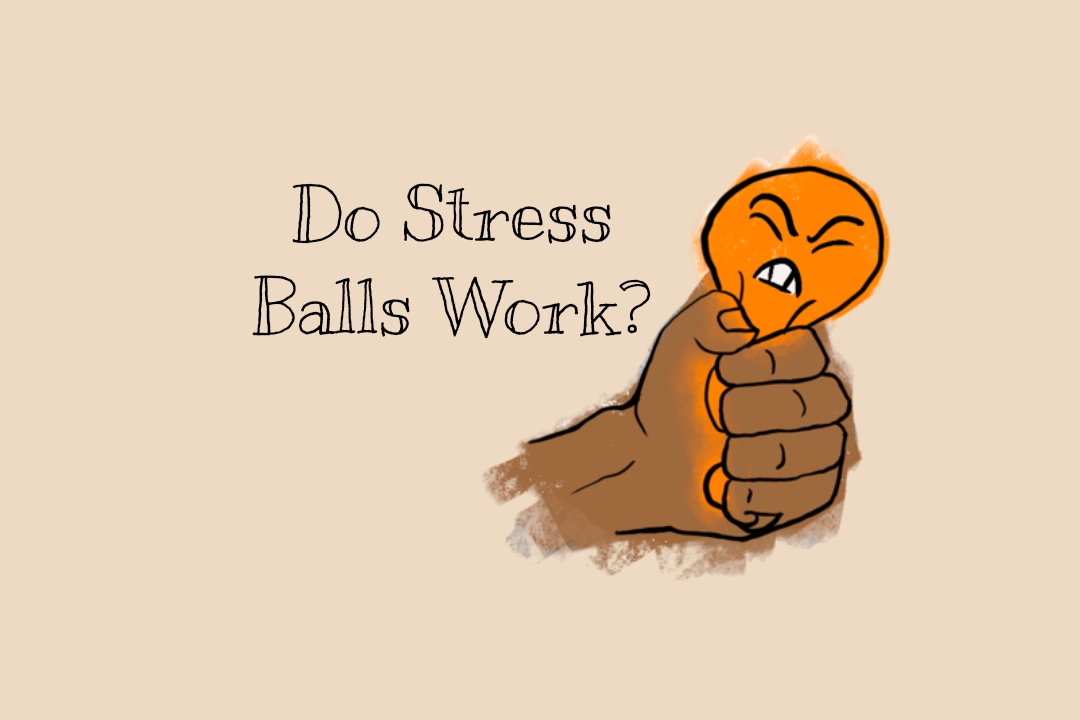The stress ball is one way to reduce stress—or so we are told
With exam season coming up, would students and school staff who are stressed about grades and heavy workloads benefit from squeezing stress balls?
Norman Farb, a professor in the Psychology department at the University of Toronto Mississauga (UTM), describes a stress ball as “any squishable or squeezable hand-held object that is marketed as being a tool for reducing stress.”
The earliest known variation of the stress-ball existed during the reign of the Han Dynasty (206 BC – 220 AD) in China, when soldiers held and hand-crushed walnuts to stay alert on the battlefield. In the Ming Dynasty (1368 – 1644 AD), Baoding balls replaced walnuts. Baoding balls are small metal balls often used in a pair. Ancient thought maintains that rolling these balls in your palm to rotate with one another relieves mental stress by stimulating hand pressure points. However, scientific evidence regarding this effect remains ambiguous.
In the 1980s, American TV writer Alex Carswell developed and commercialized the first modern stress ball. Compelled by a highly stressful personal experience, Carswell violently threw a pen at a framed photo, realized the release of channeling stress into movement, and eventually created a “squeezable stress relief aid” that manufacturers would reinvent time and time again in the years to come.
Today, stress balls come in various shapes and styles. Some resemble things like ice-creams and unicorns, and even have features like glow-in-the-dark material, fruity scents, and gel cores. They are usually made from polyurethane foam, making them cheap to buy and profitable for companies to produce.
“The advertising is that squeezing an object helps direct ‘nervous energy,’” Professor Farb says. “It is based on the idea that demanding situations prompt a ‘stress response’ in our bodies, which have evolved to deal with situational demands by prioritizing energetic (sympathetic) activation in our nervous system to deal with threats.”
The scientific community questions and, in some cases, disproves the health benefits of stress balls despite their popularity.
Last year, a team of researchers at the Air Force Post-Graduate Dental School in Texas investigated the function of stress balls in dentistry. Alongside local anaesthesia for procedures like scaling and root planning (deep cleaning of the teeth), the researchers gave 20 adults stress-balls to freely squeeze throughout one of two treatment sessions. They then examined the patients for signs of relaxation or reduced stress through galvanic skin response (GSR).
The researchers wrapped the Velcro connectors of a GSR sensor “around two different fingers on the [participants’] hand opposite the hand using the stress ball” to measure stress levels through sweat. Emotional responses, like anxiety, to sensory stimuli increase the skin’s ability to conduct an electric charge. “Sweat creates a low-resistance path enabling the measurement of electric current,” say the researchers.
The results of the study showed no significant difference between the “with-stress ball” treatment session and the “without-stress ball” treatment session. Nearly half of the study participants were indifferent to the use of a stress ball.
Doctor Brock Chisholm from Doctify, a feedback health specialist centre, argues that stress balls can actually cause a person to feel more stressed. He explains that in order to feel relaxed, muscles need to be relaxed. Continuously squeezing a stress ball causes muscles to tighten—a sign that the body is producing stress hormones like cortisol.
Orthopedic surgeon Aaron Daluiski from the Hospital for Special Surgery in New York adds that excessive use of stress balls may also lead to Carpal Tunnel Syndrome, a condition wherein the median nerve gets compressed when it travels from the wrist throughout the hand.
So, do stress balls help or hurt us? According to Professor Farb, it depends. “For grip strength training, a firm stress ball appears to have similar benefits to more expensive grip trainers or computerized dynamometers,” he says, “which are recommended by the American Heart Association for reducing hypertension.”
However, for the general population, stress balls largely only generate a placebo effect.
“Feeling like you have something to ‘do’ with your stress could help reduce experiential avoidance, leading to less procrastination and more engagement,” Professor Farb explains. “However, until someone studies a ‘stress ball training program,’ this is more theory than established evidence […] and if you become dependent on the ball and lose it, that can create problems.”

